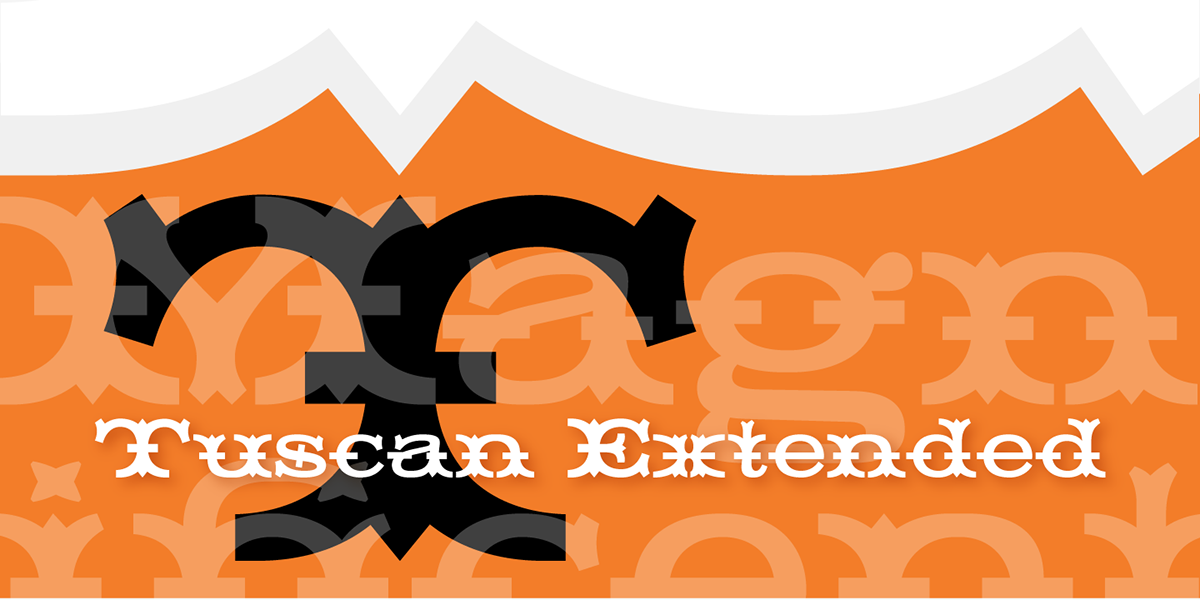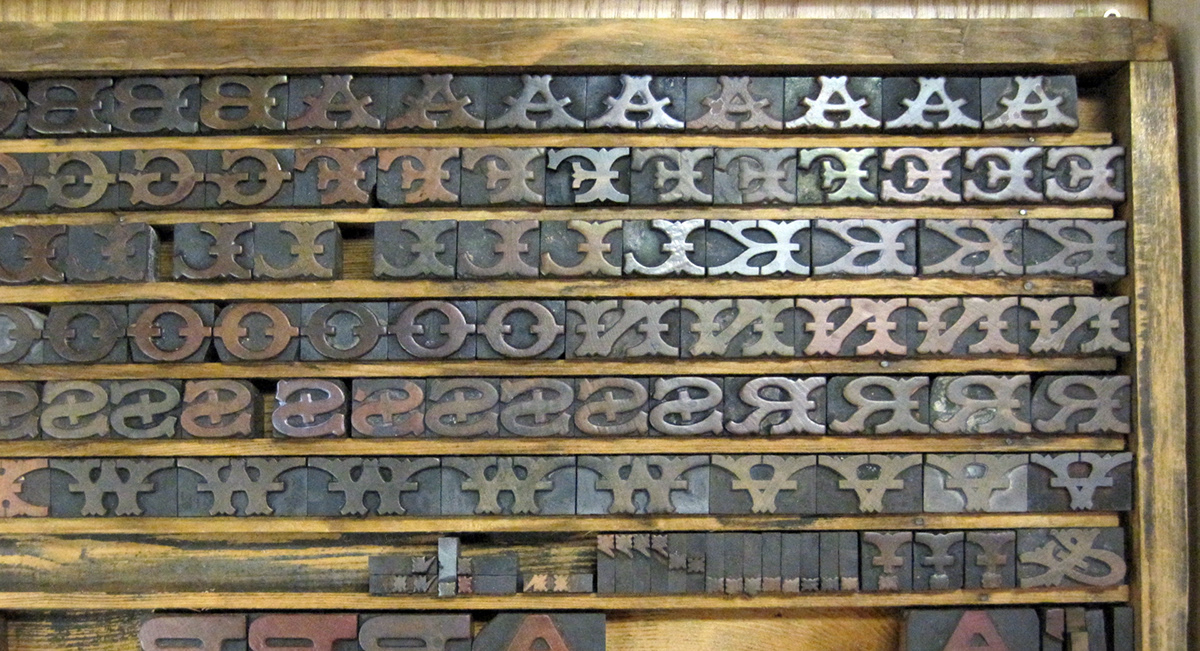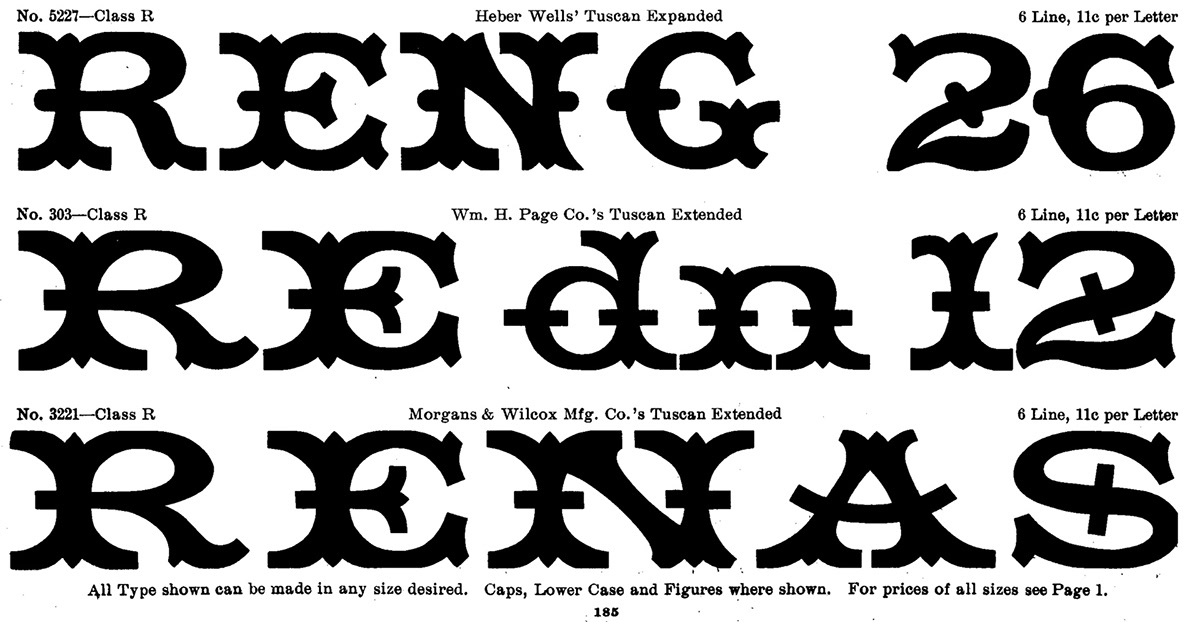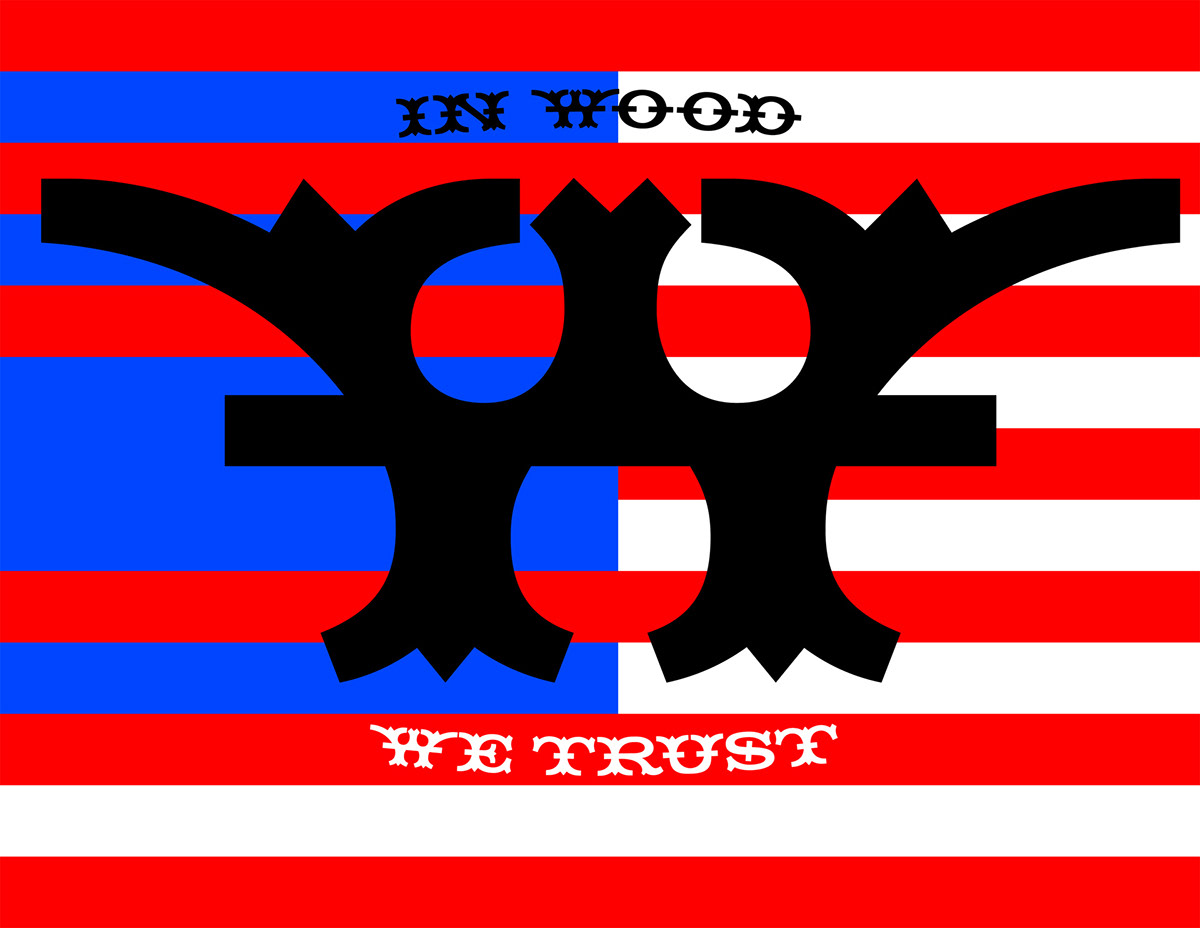
HWT Tuscan Extended, digitized by Frank Grießhammer
Introducing the first digital version of an unusually decorated late 19th-century wood type.
Tuscan wood types cover a fairly wide range of styles, and there is sometimes confusion over what is classified as a Gothic Tuscan and what is considered an Antique Tuscan. HWT American Chromatic and P22 Tuscan Expanded are more precisely faces of the Antique Tuscan variety. Gothic Tuscans are generally absent of the heavy serifs typically associated with their Antique Tuscan brethren (although decorative bifurcation of terminals can imply serifs). Additional internal decoration with spikes along the stems gives some Tuscans their distinctive look—these faces are often described as “Circus Types.”
Tuscan Extended is an extremely wide design, with a distinctive slab crossbar running through the center of most characters. Each letter is a complex system in its own right—this typeface is best used very large in short headline work. This style is a prime example of the level of excess and decoration often applied to letters in the wood type era. By no means its it the most ornamented or complex wood type design, and it defies falling clearly into either the Antique Tuscan or Gothic Tuscan category.
HWT Tuscan Extended is based on the 1872 William Page & Co. version, while also bearing a very close resemblance to the Morgans & Wilcox Tuscan Extended and No. 2106 from Tubbs Manufacturing Co. It’s similar to—but not quite the same—as the Heber Wells Tuscan Extended. (All four manufacturers were eventually acquired by Hamilton. The Hamilton designation for this design was simply: No. 303) The National Printers’ Material Co. of New York also offered a similar Tuscan Extended.

This extra large specimen book from William Page & Co (Courtesy Newberry Library) shows a 30 line (5 inch) type in its first use: pristine condition with sharp edges.

The Tuscan Extended found in a type case (Courtesy Massey College) shows rather worn and well used type with rounded edges. The F in the center was somehow spared the heavy shop use and shows sharp edges as the design was intended to be.

Comparisons of three version of Tuscan Extended as seen in rare Hamilton Catalog where it offered cuts from the various companies it had acquired. (Courtesy Hamilton Wood Type & Printing Museum)

The new HWT version of Tuscan Extended has been meticulously redrawn by Frank Grießhammer. During production, he also incorporated a number of new letterforms, bringing the font to over 300 characters (including a full ASCII character set and Central European accented characters).

The original Wm. Page specimen can be seen in the blue above with red overlay showing Grießhammer's redrawn letters. Slight changes were made to improve overall usability and consistency.

Historically, multiple competing wood type manufacturers relentlessly copied each other's designs (and kept less than complete records on their own work). That practice can make it difficult to identify the true source of incomplete sets of wood type found in shops or museums. We are grateful for the assistance of our research partners for this project, including David Shields, The Rob Roy Kelly Collection at the University of Texas at Austin; the Cary Collection at the Rochester Institute of Technology (RIT); the Newberry Library in Chicago; Massey College, Toronto; and the Hamilton Wood Type & Printing Museum, Two Rivers, Wisconsin.
Available Early December 2013

